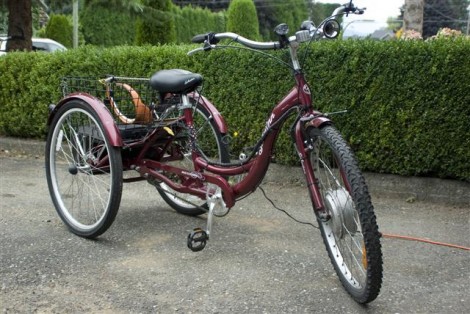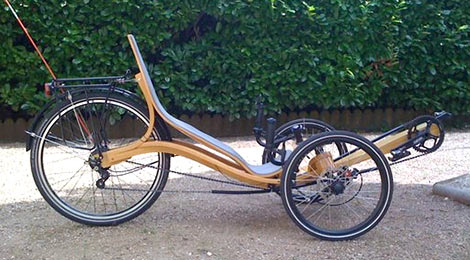This tiny little scratch-built electric tricycle is a insanely powerful. Some might think you don’t need a crash helmet for testing a trike, but seeing the video after the break where [Ben Katz] is flying through a parking garage while slaloming between the support beams proves that this ride has some pep to it.
Looking through the presentation post linked above is fun, but when we started digging though the six build log posts we felt ourselves getting sucked into the project. It’s a delight every step of the way. It started with an aluminum box which will host the two rear wheels, drive train, motor, and battery. [Ben] decided to go with A123 Lithium cells, and after testing to see how many he could fit in the space available he started making choices on the motor and driver circuit. When he finally got his hands on the actual cells for the project he took on the fascinating process of constructing his own battery. Dozens of them were hot glued, then soldered together before being encased by placing them in soda bottles and hitting the plastic with a heat gun. And we haven’t even gotten into the bicycle hub-gear transmission system, disc brakes, differential, chain-drive, and motor… you see what we mean about sucking you in.
Oh, and in case you’re wondering this is not [Ben’s] first electric vehicle build. Last year he was showing off his all terrain scooter.
Continue reading “Electric Tricycle Build Log Is Like Hacker Crack”

















